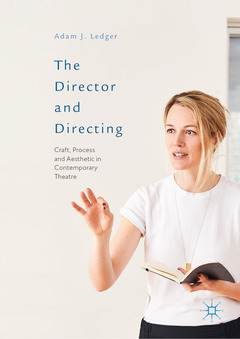Description
The Director and Directing, 1st ed. 2019
Craft, Process and Aesthetic in Contemporary Theatre
Author: Ledger Adam J.
Language: English
Keywords
Director; Directing; Contemporary theatre; Declan Donnellan; Thomas Ostermeier; Deborah Warner; Simon Stone; Krzysztof Warlikowski; Performance event; Cognition and creativity; Katie Mitchell; Ivo van Hove; Carrie Cracknell; Steppenwolf Theatre; Simon McBurney; Dmitry Krymov; Robert Wilson; Robert Lepage
Publication date: 09-2019
Support: Print on demand
Publication date: 04-2019
275 p. · 14.8x21 cm · Hardback
Description
/li>Contents
/li>Biography
/li>Comment
/li>
Adam J. Ledger is Reader in Theatre and Performance, University of Birmingham, UK. He has published widely on performance practice. His previous publications include Odin Teatret: Theatre in a New Century (Palgrave Macmillan) and chapters and articles on several international directors. He is co-artistic director of The Bone Ensemble.
Offers a coherent discussion of both the commonalities and divergences in a range of directors’ work
Explores directors' relationships with the actor/performer, the audience/spectator, and with the theatrical material itself
Includes first-hand testimony from a range of practitioners as well as the author's own spectatorship

